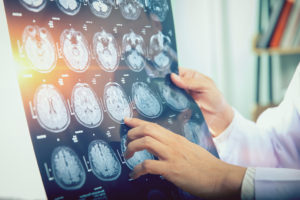
Children’s mental health issues are hard to predict until they’re causing problems, but researchers may have found a way to use brain scans to spot which kids are at risk for depression, anxiety and attention problems.
“We’re facing a tremendous epidemic with teen anxiety and depression and we wanted to find an early marker that predicted the development of anxiety, depression and attentional symptoms,” said the study’s lead author, Susan Whitfield-Gabrieli. She’s a professor of psychology and director of the Northeastern University Biomedical Imaging Center, in Boston.
In a small sample of less than 100 children without known mental health concerns, the research team found that connections in certain areas of the brain seen at age 7 could help predict mental health concerns that developed four years later.
“The study could have great clinical implications,” Whitfield-Gabrieli said. “Identification of these biomarkers at such a young age could promote early interventions—exercise, mindfulness, cognitive behavioral therapy—which might mitigate symptoms and possibly even prevent the progression of psychiatric illness.”
But she was also quick to note that this is an early study, and scans aren’t available as a screening tool now. “Although I think that neuroimaging may become a useful screening tool in the future, I don’t think that we are there yet,” Whitfield-Gabrieli said.
Dr. Victor Fornari, vice chairman of child and adolescent psychiatry at the Zucker Hillside Hospital in Glen Oaks, N.Y., reviewed the findings.
“The identification of biomarkers for psychiatric disorders remains a promising area of research investigation,” he said, adding that this study showed it might be possible to visualize and measure mental health vulnerabilities before they cause symptoms.
The study included 94 children who began the study at age 7 (including 53 boys and 41 girls). Most (77) had no known mental health concerns; 17 were at risk of a reading problem.
The kids all had functional MRI scans. This type of scan gives more detail about what’s going on in the brain by measuring changes in blood flow, according to the Radiological Society of North America.
The investigators found that a certain pattern of connections in one area of the brain at age 7 could help predict who might have depression and anxiety by age 11. They also found that weaker connections in this brain area forecast who might have fewer attention problems at age 11.
Whitfield-Gabrieli said she hopes to look at brain scans in infants next, to see if these mental health concerns could be identified even earlier in life.
If further studies confirm that researchers can predict who’s at risk for conditions such as depression or attention-deficit/hyperactivity disorder, interventions such as cognitive behavioral therapy or mindfulness training might help.
Whitfield-Gabrieli said the good news is that “behavioral interventions don’t have side effects.”
The findings were published online recently in JAMA Psychiatry.
 /a>
/a>
 /a>
/a>
 /a>
/a>